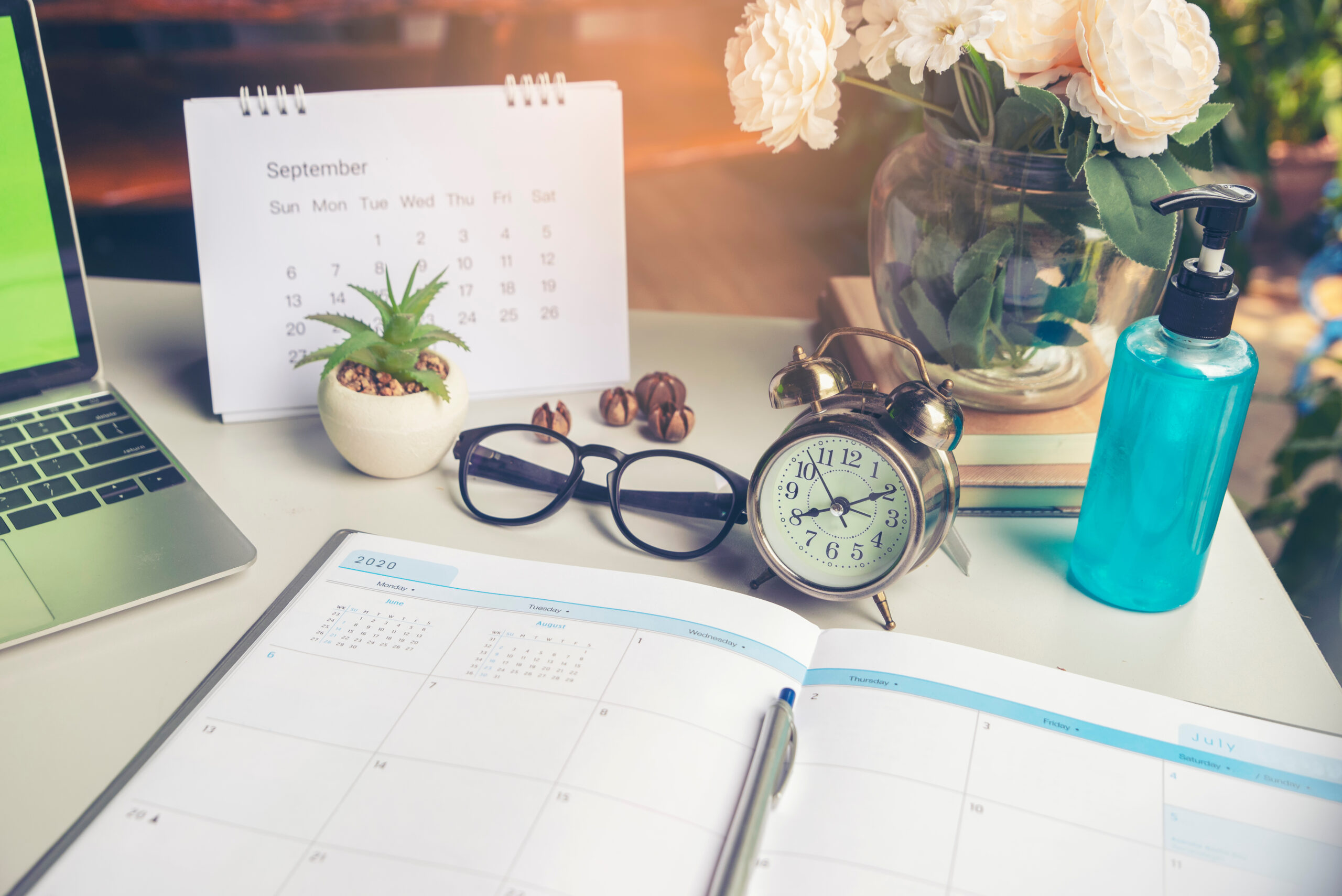Estimated reading time: 15 minutes
Attention-Deficit / Hyperactivity Disorder is a neurodevelopmental disorder affecting focus, coordination of thoughts, processing information, or controlling impulses. [1] While common in childhood ADHD is often detected in adults and can cause difficulty with daytime activities as well as careers.
Children Statistic: Approximately 129 million children and adolescents worldwide aged 5-19 have ADHD. [2]
Many adults with ADHD find it difficult to share their challenges with their managers due to workplace culture or stigma. This can make the impact on their career overwhelming and lonely.
Table of contents
More and more adults are being diagnosed with ADHD due to increased awareness of the symptoms. This is causing a significant challenge for many people in the workforce who struggle with time management and find it hard to keep up with their colleagues. As a result, traditional productivity methods are not always effective for this group of people.
Adult Statistic: In the United States, it is estimated that approximately 8.7 million adults have ADHD. [3]
For someone with ADHD, finding the motivation to engage our brain in certain tasks is hard. ADHD impacts executive function and the ability to stay motivated. The impact of this hurdle can vary from forgetting to take out the trash and failing to pay bills to even being unable to maintain a consistent job. And it’s likely that we’re missing deadlines in the process.
Thankfully, tools and systems are designed to assist individuals with ADHD in enhancing their focus, organization, and working memory, particularly for crucial tasks.
We’ll explore challenges associated with ADHD, why you might turn to an adult ADHD planner as a solution, and introduce a digital planner designed specifically for individuals managing ADHD.
Why an ADHD Planner for Adults?
Someone might need an ADHD planner to help navigate the challenge. ADHD can make planning tasks, prioritizing and organizing to-do lists challenging, and feeling overwhelmed to engage in ordinary activities. People with ADHD can also experience “time blindness.”
Time Blindness
What is time blindness? Time blindness occurs when you get completely lost in an activity and don’t realize how much time has passed. For me, more recently, you’ll see this occur when I start playing Candy Crush before I head to bed, and then suddenly, it’s 2 am, and I have to be up at 6. For others, this might look like always being late to appointments. Or working long hours.
Whether you find that your need for improved planning is due to time blindness, general executive function challenges, or even analysis paralysis, a planner is a tool to help you stay on top of the things you need to do.
It can also help you better plan your time. The important thing is to find the right and best planner for your needs.
Using an ADHD Planner
If your life seems chaotic, one of the biggest things you can do is to create a habit of getting organized with the help of a planner designed for individuals with ADHD.
One type that is frequently recommended is paper planners. People will often refer to the tactile experience of using a pen and paper and writing out a schedule and to-do list. Traditional planners may also appeal to individuals because it’s believed that physically crossing off a to-do list is easier and better, thus tapping into our human tendency of completion bias (the act of selecting easier tasks in order to promote dopamine while avoiding more time-consuming tasks).
As someone, though, with ADHD, I’ve tried so many planners and find that they often simply do not stick. I find they get started and I either:
- Lose the Planner
- Use it for three days, convince my brain I’m doing awesome, and then lose tracking of doing it again.
- Buy it because it’s pretty and never open it. It ends up being an expensive habit.
Try an ADHD Digital Planner
Often, the best planner for ADHD is one that travels easily with you. A planner can offer new flexibility, allowing you to personalize it to fit your needs and transform it into your ideal organizational tool.
Using an ADHD planner can be a game-changer. Creating a system-like approach to productivity and managing daily tasks more effectively.
Key Strategies
- • First, keep it simple and clutter-free by focusing on essential tasks and events, and avoiding overwhelming yourself with unnecessary details.
- • Use color coding and categories to visually organize information visually, making distinguishing between different aspects of your life easier.
- • Set reminders and alarms for important deadlines, appointments, and activities to ensure nothing slips your mind. Organize your monthly calendars as you plan for the next day.
- • Regularly review and update your planner, breaking down larger tasks into smaller, more manageable steps.
- • Embrace the flexibility of digital planners to adjust schedules as needed without the hassle of crossing out or erasing.
- • Most importantly, be compassionate with yourself if you miss a task or experience a setback.
A digital planner can serve as your reliable ADHD companion, helping you stay on track and gain a sense of accomplishment in your daily activities.
Benefits of a Digital Planner
Firstly, digital planners are easy to access anywhere, anytime, making it effortless to stay organized on the go. Secondly, they allow for seamless integration with other tools, like Google Calendar and task managers, streamlining your workflow and ensuring no important dates or tasks slip through the cracks.
They frequently provide the flexibility to personalize layouts and colors and even include various visual elements, transforming them into dynamic and interactive organizational hubs.
Lastly, let’s not ignore the eco-friendly aspect – opting for one means contributing to a greener planet by reducing waste with paper pages.
Benefits of an ADHD Planner
These planners help you stay organized and on top of your schedule, resulting in various benefits:
Reduce Stress: Keeping your to-do list, event dates, schedule, and deadlines in a planner can improve your organization and relieve the stress of forgetting important things.
Timely Reminders: Writing down deadlines, appointment dates, and pending tasks ensures you attend to each.
Clear Goals: An ADHD planner lets you document and break your goals into smaller steps. You can also establish mini-deadlines for each subgoal to ensure achievement by the final due date.
Better Time Management: It’s easier to prioritize your tasks and deadlines by considering their complexity and urgency.
Increase Motivation: Breaking down goals and planning ahead provides direction and motivation, aiding those with ADHD.
Why Not a Paper Planner?
A regular planner does not offer the important flexibility needed to reorganize and easily prioritize tasks. It is hard to customize and there may be pages that you do not need that may be distracting.
While traditionalists may argue for the charm of flipping through physical pages, there’s no denying the numerous advantages that planners offer.
How ADHD Planner Can Improve Daily Life
A well-developed plan can help improve their lives. Daily planners can significantly improve life by providing structure, organization, and a sense of control over their responsibilities and activities during the week.
It often causes challenges in maintaining focus and memory. A daily planner becomes a reliable external aid, acting as a visual guide to keep track of tasks, your calendar, appointments, and deadlines.
Jotting down and planning daily activities helps reduce anxiety and overwhelm, as individuals can prioritize tasks and set achievable goals.
Using color-coding and organizing entries offers clarity, simplifying the understanding and management of different aspects of life.
Consistently using a planner promotes improved time management, helps establish routines, aids in forming positive habits, and decreases hasty decision-making.
ADHD planners offer the advantage of keeping up with our brains, enabling quick adjustments to accommodate unexpected changes throughout the calendar. A daily planner empowers those with ADHD, promoting productivity, boosting self-confidence, and ultimately enhancing their overall quality of life.
Leantime: More Than a Digital Planner
Leantime is a project management system built for ADHD by experienced project managers with ADHD.If you’re currently looking for an the best planners for ADHD, we’re going to suggest something a bit out of the box compared to other planners.
Though considered a project management system, the tool offers a unique approach to digital planning and time management — allowing you to reap traditional planners’ benefits while improving our natural intrinsic motivation.
Building features based on scientific approaches to increasing dopamine and boosting our brain’s drive, Leantime offers a new approach to work management apps, organizing your calendar, and traditional paper planners.
Here are some of the ways Leantime stands out as one of the best ADHD planners for adults.
Calendar: Visualize Your Process
Leantime provides a home page with a custom calendar and task view. A visual calendar provides a structured and visually appealing way to manage their time, set goals, and maintain a sense of routine. It is a practical tool to support executive functioning skills and enhance overall productivity.
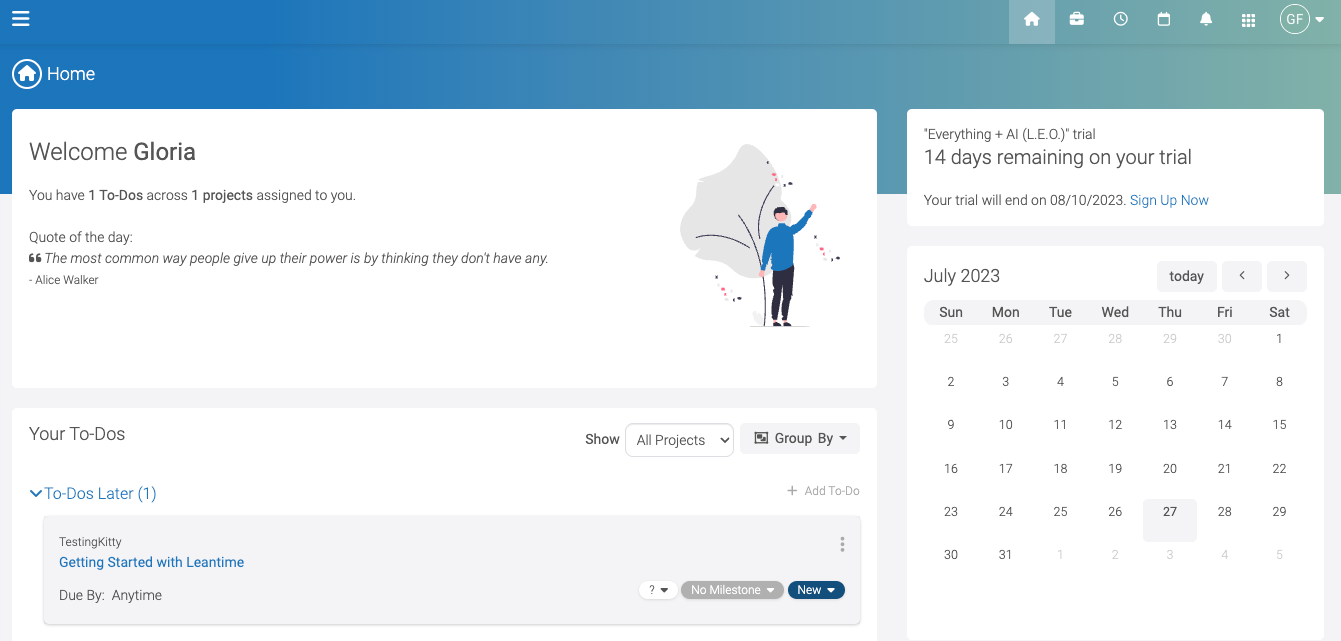
A calendar layout to remind you of weekly tasks and events.
Calendar: Remind You of Weekly Tasks and Events
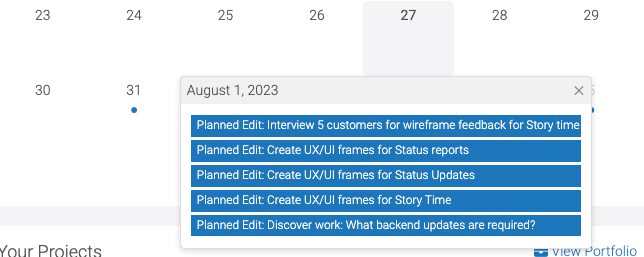
Mapping out your week on a calendar can help decrease stress around uncertainty and help give you a point of commitment to your plans during the week.
Stress-Free Workflows
Workflows offer a systematic and structured approach to tasks, providing individuals the tools to overcome organizational, decision-making, time management, and goal achievement challenges. The visual and procedural aspects of workflows can significantly enhance their ability to navigate daily responsibilities effectively.
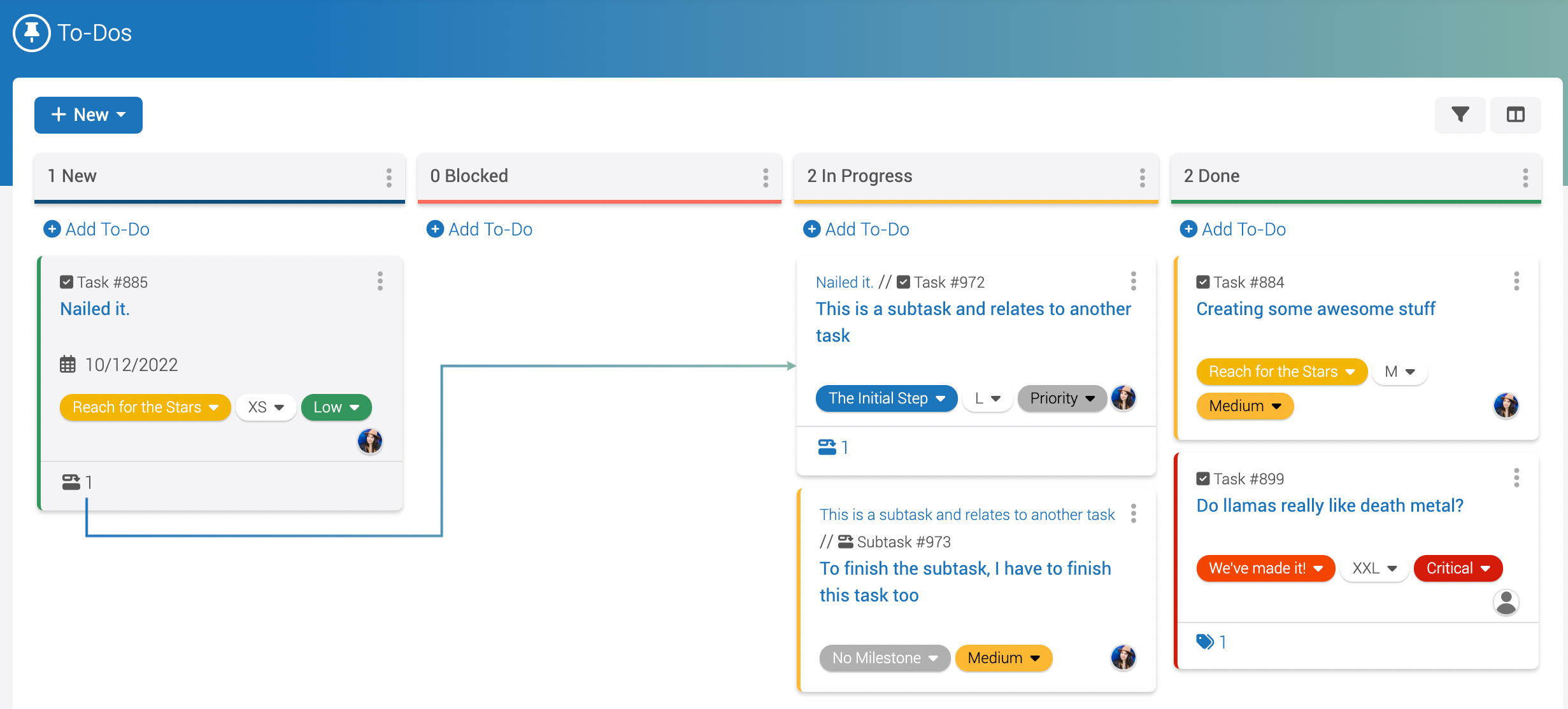
The other digital apps out there require you to think about how you want to set up your work to map that out, but as someone with ADHD, many of those apps create a feeling of being overwhelmed as I just want to get working and not have to spend time thinking about how to organize my weekly productivity schedule and layout my specific tasks.
Even list and tag subtasks to break the tasks into smaller and more manageable activities.
Goals Promote Dopamine
Dopamine is secreted on the way to a goal — so as we see progress, anticipate, or even envision achieving the goal… we can secrete dopamine. Dopamine is the hormone that promotes us to be more engaged and increases motivation.
By showcasing goal progress on multiple levels, the dopamine boost increases the drive needed to complete the work we’ve decided, planned for, and created a schedule for.

High-level Goals
If you’re working with a team or yourself, Leantime views strategy as the high-level vision of what we are working towards accomplishing — discovering the why, the what, the how, and the purpose.
At the strategy feature level, you are able to write out specific “anchors” or focus areas to help you better manage your to-do lists, and goals, and prioritize life. The “Customer” title can be named to whatever focus area you want to impact. The system, however, will create a default layout of focus areas that are most common in business.
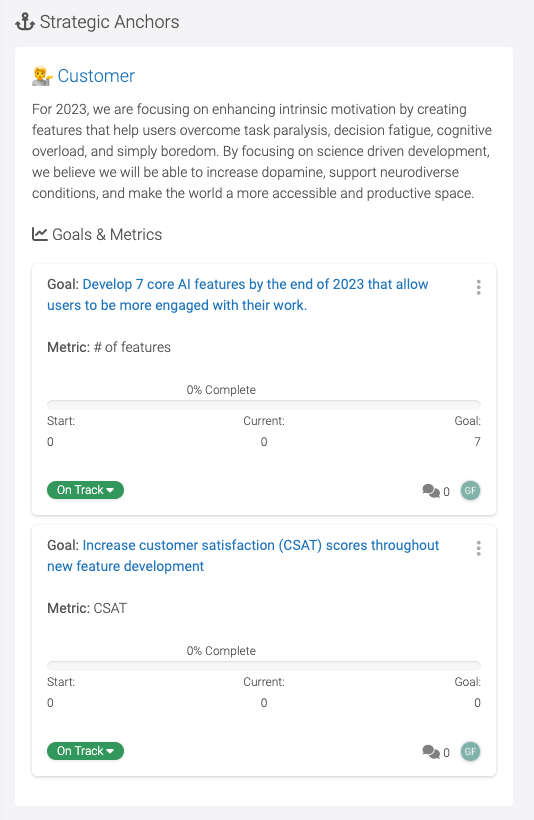
Multiple Views: Accommodate All Types of Brains
Leantime makes to-do lists personal by offering three types of views — so whether you prefer a traditional to-do list, a Kanban board view, or even viewing tasks on a table format, there’s an option for you.
There are also multiple places to view tasks over a calendar, export to ics for your personal calendar, or even view on a home dashboard view.
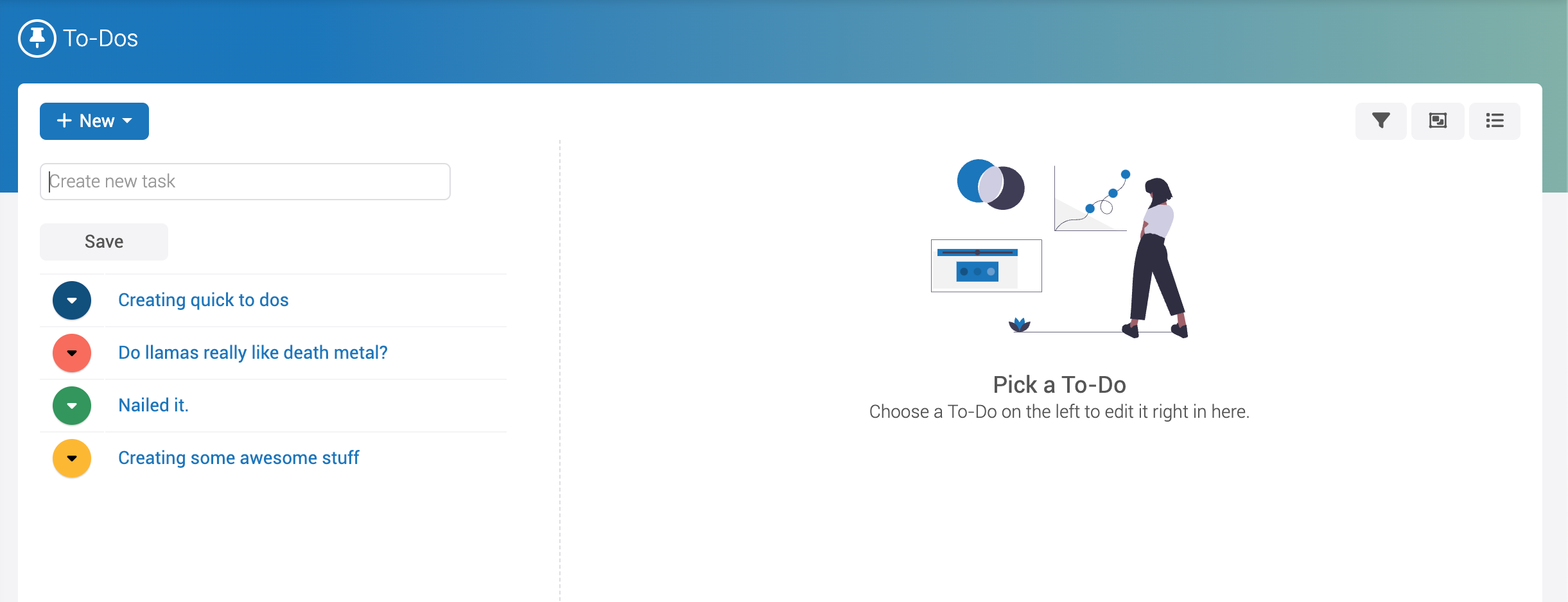
Time Blocking and Time Tracking
Unlike traditional paper planners, here you’d have the ability to time box and track time directly from the tasks. If you’re running a business, this is great for billing for your clients and also takes a more Pomodoro technique-like approach to your week.
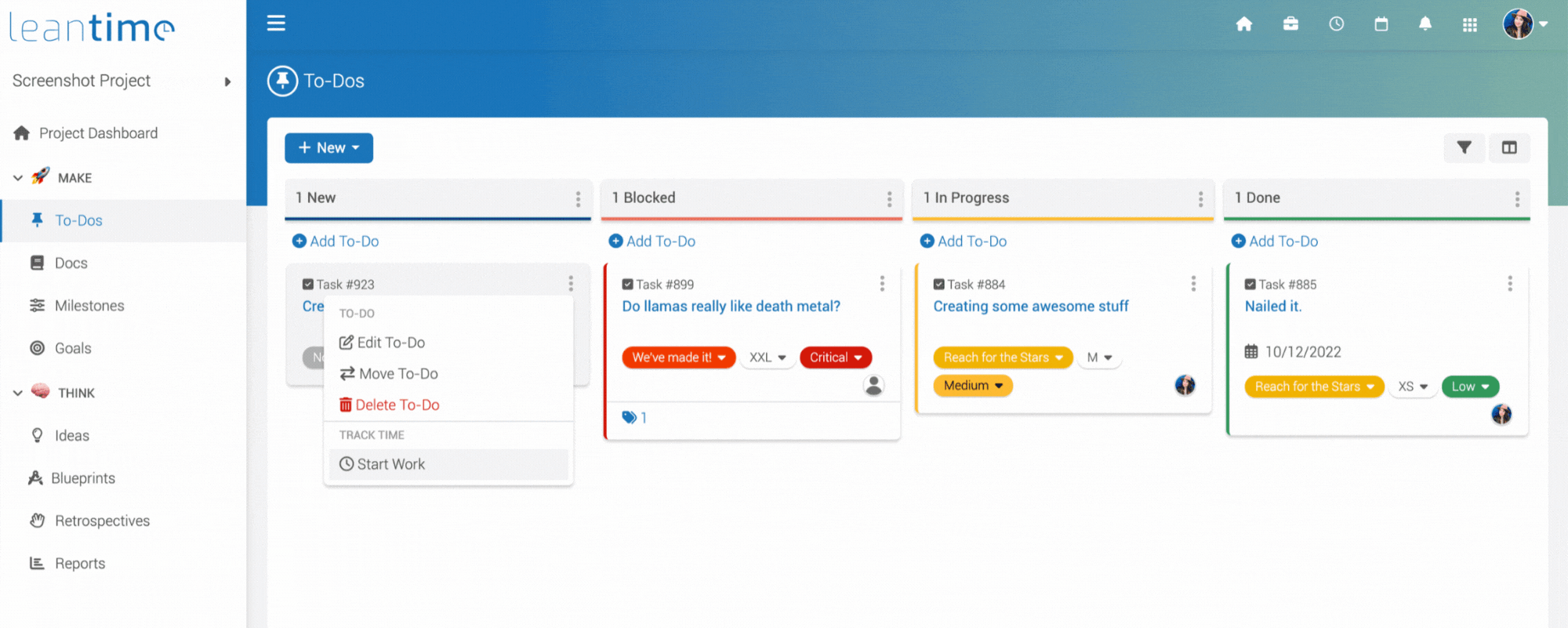
Time tracking and time blocking are beneficial tools for improving their time management skills, enhancing productivity, and creating a more structured and manageable daily routine. These practices help individuals better understand time and enable them to make intentional choices about how they allocate their resources.
Milestones as Groups of To Dos
Taking a Gantt chart approach with milestones, you can visualize what you’d like to accomplish and the associated tasks to get there.

Easy Note-Taking with Docs
Easy note-taking in digital documents offers a range of features that can support people with ADHD in organizing, retrieving, and maintaining their notes. The ease of use, search functionality, and options render digital note-taking a practical and effective tool for managing information and staying organized.
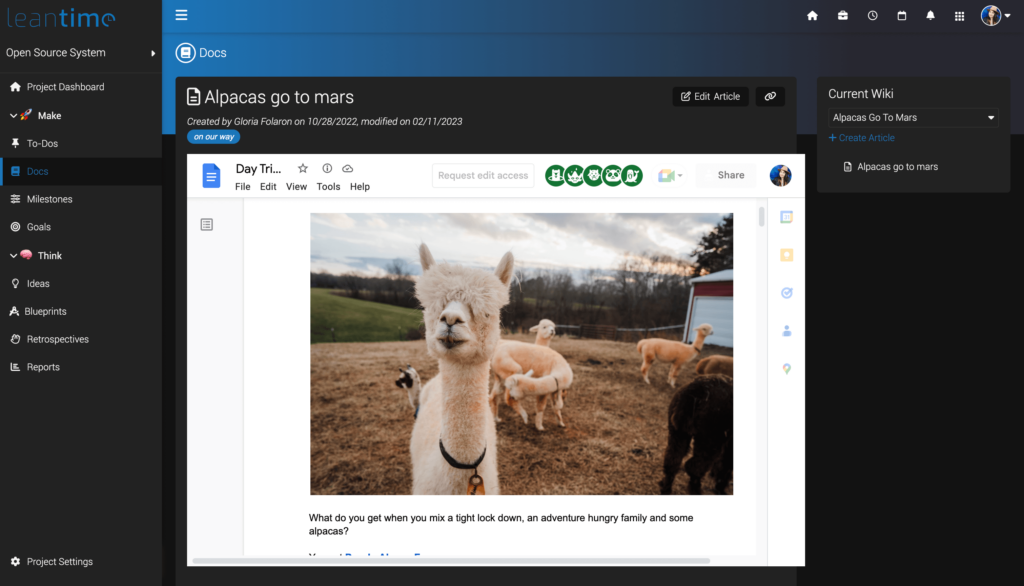
Using AI to Make the Work Less Boring
Leantime personalized storytime. Mapping out the “why” of what we’re doing is really important. Our brains, though, often needing the next exciting thing — and unfortunately, the “why” of many tasks can be boring, dry, and once you know… you know.
With AI Storytime, like an epic game montage, the AI will take the project information and write a personalized story in a special voice tone.
Read More: AI: How It’s Used in Project Management
This feature’s goal is to encourage our working memory to better recall the purpose, why, what, and even the how of what we’re working towards.
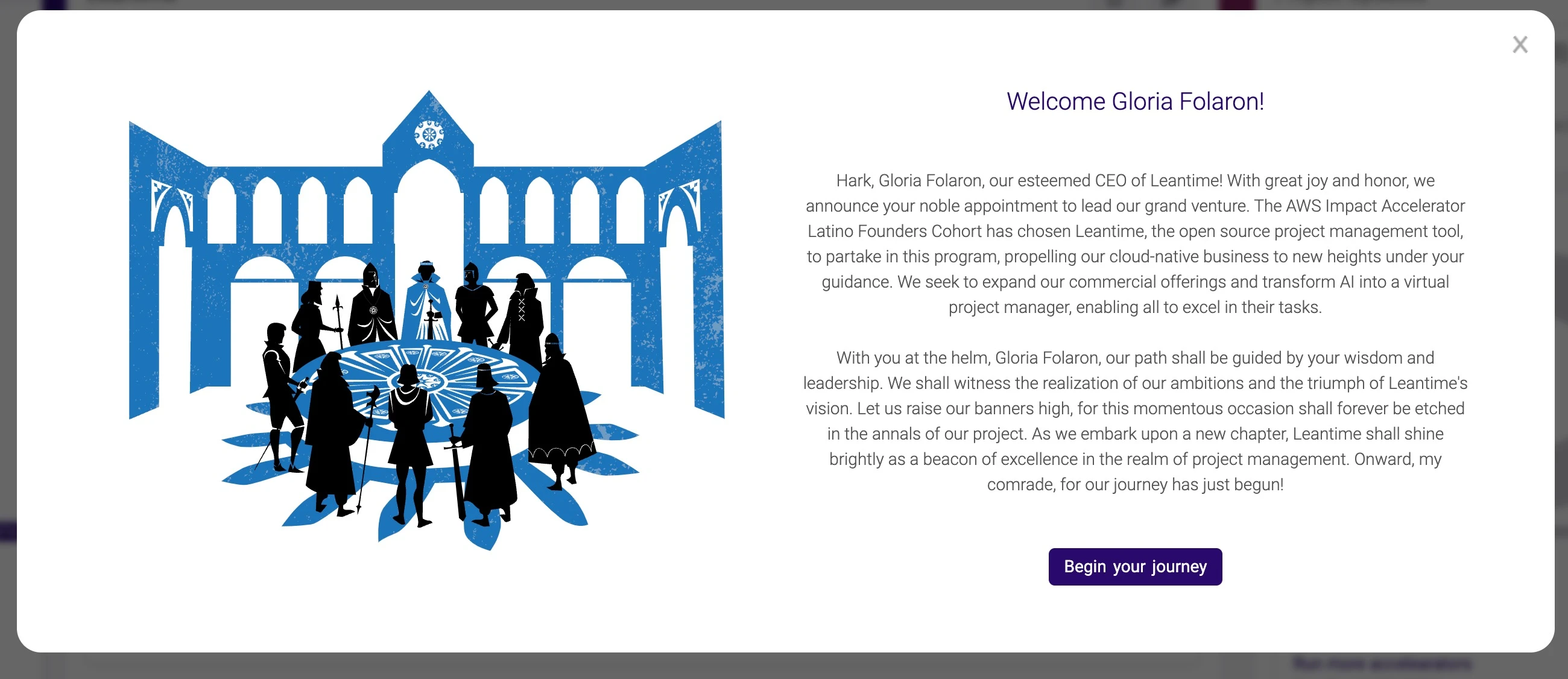
Status Updates & Status Report

Whether you’re working with a company, team, or working on your own individual projects, we see AI as an accountability partner, a personal project manager, and a path to making more engaging.
Traditionally, collecting status updates is something thought of for project managers, program managers, or for folks needing to update stakeholders. For someone planning the day-to-day with ADHD, you can use AI to stay accountable.
In this case, you’ll set the timeframe (think weekly, bi-weekly or otherwise) for compiling a report and when you need to give a status update.
As you update your tasks, the AI will compile a status report of all that you’ve done, and you can use this report to:
- See your progress
- Get a summary and assessment of what you’ve accomplished and where you were blocked.
- Have a built-in level of accountability.
Because the AI will compile it in a specific format, it’s got the feeling of taking a quiz to see how the AI reports out how you’ve done. If you are working with a team, it is a great way to make sure everyone is on the same page.
Personalized AI Coach
Your personalized AI coach exists for several reasons.
- Humans often remember things we didn’t finish or do well and forget what we did and did well.
- We forget the value we bring to the things we’re doing.

Using a principle called variable rewards, the AI harnesses the element of surprise combined with the acknowledgment and recognition of everything you’ve been accomplishing over the entire year and the time you’ve been tracking. They’ve got multiple voice tones again here as well.
Having an ADHD Planner
Whether you are using the system as a daily planner, creating and tracking events of the week, or time blocking your tasks, a planner is an essential part of managing ADHD. An electronic planner offers a unique feature set and increased flexibility, while a more traditional planner can give you a more tactile experience with the presence of physical pages.
As you find the best planner for your needs, be sure to give yourself the space and patience as you navigate the setup, get acclimated to the routine, and manage your ADHD in the workplace.
Resources:
[1] CDC. (2023, September 27). What Is ADHD? Centers for Disease Control and Prevention. .
[2] CHADD. (2018). General Prevalence of ADHD. CHADD. View Resource.
[3] Schein, J., Adler, L. A., Childress, A., Gagnon-Sanschagrin, P., Davidson, M., Kinkead, F., Cloutier, M., Guérin, A., & Lefebvre, P. (2022). Economic burden of attention-deficit/hyperactivity disorder among adults in the United States: a societal perspective. Journal of Managed Care & Specialty Pharmacy, 28(2), 168–179. View Study.
Other articles you may be interested in
- Work Management for ADHD & ADD
- Digital Consulting Agencies
- Managing Projects with ADHD: Skip Personal Project Planners
- How to Use AI for Business Strategy (+ A Step-by-Step Guide)
- Jobs for people with ADHD: Try Project Management
- Top 5 ADHD apps for organization and time management
- Is ADHD a Disability When Applying For a Job?


